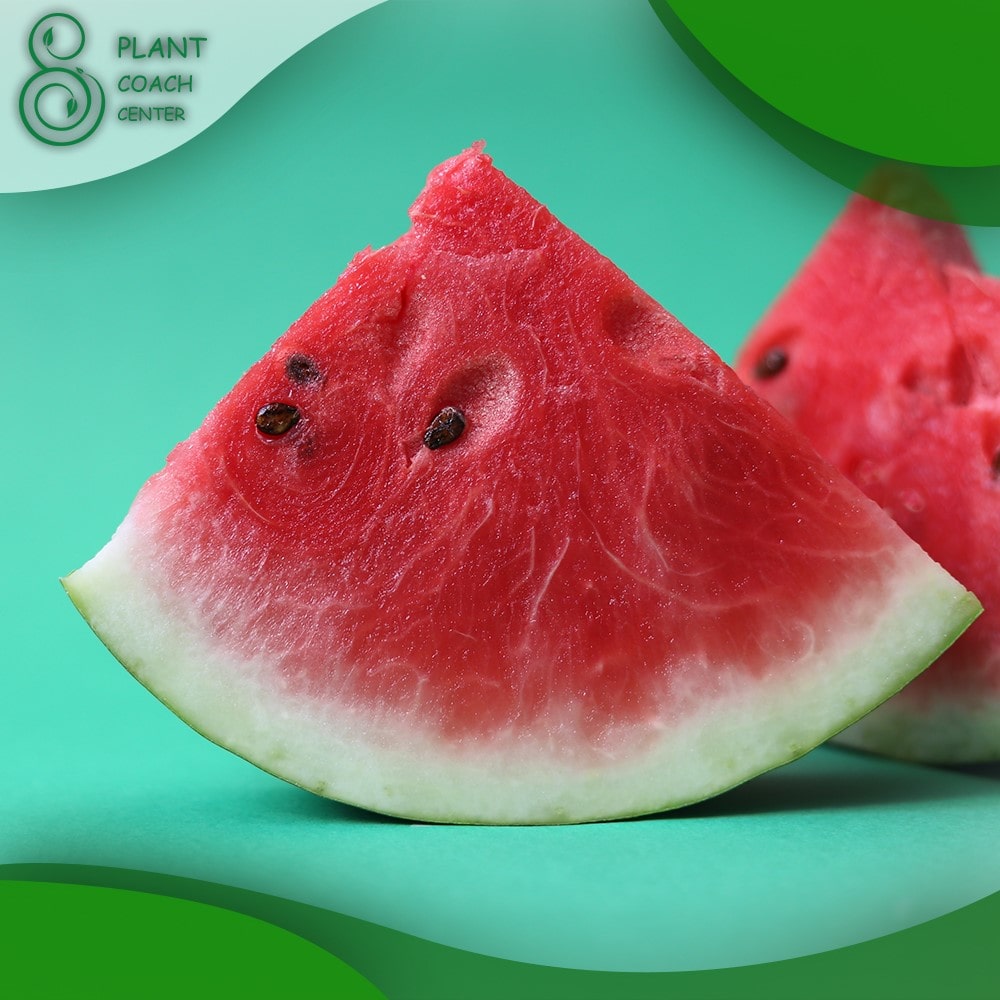When to Grow Watermelon
With their refreshing sweetness and juicy allure, watermelons are a summertime favorite that beckons both young and old to indulge in their succulent delights. Yet, the key to relishing the perfect watermelon lies in the crispness of its flesh and the timing of its growth. Understanding when to plant and nurture these vibrant green orbs is a gardening art form that can make all the difference between a bountiful harvest and disappointment.
In this guide, we will journey through the seasons, exploring the intricate dance between watermelons and the passage of time. From the balmy days of spring’s awakening to the scorching heat of summer’s zenith, we will unravel the secrets of when to grow watermelons, unlocking the mysteries of soil temperature, weather patterns, and the ideal moment to bring these summer treasures to life. So, whether you’re a seasoned gardener or a curious green thumb, join us as we delve into the chronological nuances of cultivating nature’s most refreshing gift – the watermelon.
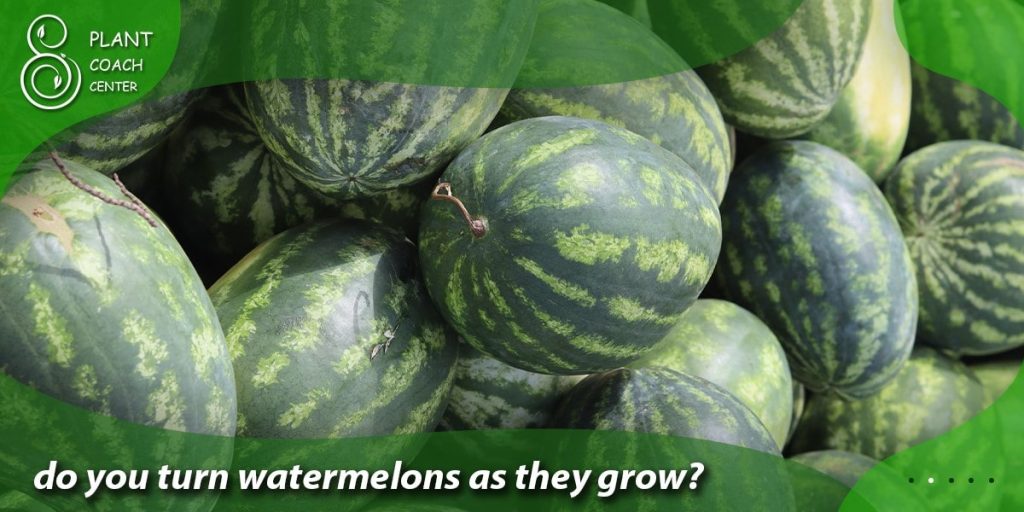
Seasonal Selection
Choosing the right season to grow watermelons is like selecting the perfect time to embark on a grand adventure. Each season presents its unique challenges and rewards when it comes to cultivating these delectable fruits. Understanding the distinct characteristics of each season can help you make an informed decision about when to plant your watermelons.
Spring Sprouts
Spring is a time of rebirth and renewal, making it an enticing season for gardeners eager to get their hands in the soil. As the days grow longer and temperatures rise, the soil warms up, making it suitable for watermelon seeds. Planting watermelons in the early spring allows you to enjoy the mild weather. Be cautious, though; planting too early can expose young seedlings to late-season frosts, so it’s essential to monitor local weather patterns and protect your plants if necessary.
Summer Sizzle
The heart of summer is the prime time for watermelon enthusiasts. These heat-loving plants thrive in the scorching sun, and summer provides the ideal conditions for rapid growth. Planting watermelons in late spring or early summer ensures that they benefit from the long, warm days ahead. Remember to keep them well-watered, as watermelons require ample moisture to produce the juicy, sweet flesh we crave.
Autumn Ambitions
While watermelons are typically associated with summer picnics, some gardeners in milder climates may find success planting them early to mid-fall. As the temperatures begin to cool, the risk of scorching heat diminishes, and watermelon plants can thrive without the stress of extreme summer weather. However, ensuring they have enough time to mature before the first frost is essential, so check your local frost dates and plan accordingly.
Winter Wonders
Some adventurous gardeners even attempt to grow watermelons during the winter months in regions with mild winters. This can be achieved in a greenhouse or by providing appropriate insulation and protection from frost. While it’s a challenging endeavor, the reward of savoring homegrown watermelons amid winter’s chill can be incredibly satisfying.
Weather Watch
When growing watermelons, keeping a close eye on the weather is akin to being a vigilant guardian of your garden’s success. Weather conditions play a pivotal role in the growth and development of these juicy fruits. Let’s delve into the importance of monitoring the weather and how it can impact your watermelon crop.
Temperature Tidbits
Watermelons are sensitive to temperature fluctuations, particularly in the early stages of growth. Soil temperature, in particular, is crucial when planting or transplanting seedlings. Watermelon seeds germinate best when the soil temperature consistently hovers around 70-95°F (21-35°C).
Too cold, and they may fail to sprout; too hot, and they might struggle to establish roots. Therefore, using a soil thermometer to gauge the temperature before planting is wise. Additionally, extreme temperature swings, such as sudden frost or heat waves, can stress the plants, affecting fruit development.
Sunshine Story
Watermelons are sun worshippers. They crave ample sunlight to produce those sweet, succulent melons we adore. A minimum of 6-8 hours of direct sunlight daily is ideal for optimal growth and fruit production. While watermelon plants can withstand high temperatures, they also benefit from shade during the hottest part of the day to prevent sunscaling on developing fruit.
Choosing the right location for your watermelon patch and providing the necessary shading during intense heatwaves can make all the difference.
Rainfall Rhythms
Watermelons need consistent moisture throughout their growth cycle. Irregular watering can lead to problems like cracked fruit or poor fruit set. While they require sufficient hydration, they also dislike overly wet conditions, which can encourage diseases.
If your region experiences heavy rainfall, consider planting watermelons on raised mounds or using well-draining soil to prevent waterlogged roots. A consistent watering schedule is essential in drier climates to keep the soil moist but not saturated.
Watchful Gardening
You can adapt your gardening practices while you can’t control the weather. Stay informed about local weather forecasts, especially during critical growth stages. Use mulch to regulate soil temperature and moisture levels. Cover young plants during unexpected cold snaps or intense heatwaves. Employ row covers or cloths to shield plants from harsh sunlight.
By staying attuned to the weather and taking proactive measures, you can help your watermelon plants thrive despite Mother Nature’s whims.
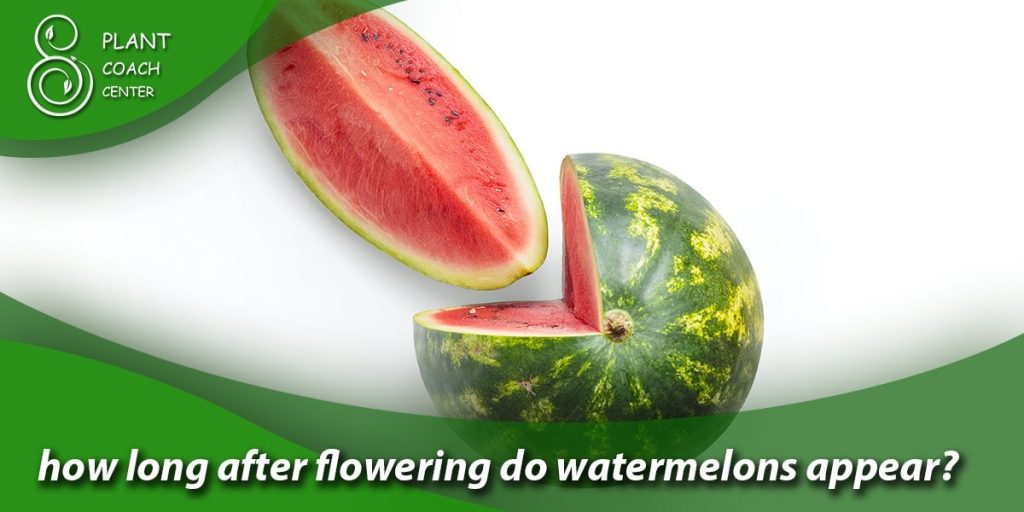
Choosing Varieties
Watermelons come in a delightful array of varieties, each with its unique characteristics, flavors, and growing requirements. Deciding which variety to plant is a crucial step in successfully growing watermelons. Let’s take a closer look at some popular watermelon varieties and their specific attributes to help you make an informed choice.
Classic Picnic Watermelons
If you envision the quintessential summer picnic watermelon, you’re likely thinking of the classic, large, and round varieties. These include the ‘Crimson Sweet,’ ‘Charleston Gray,’ and ‘Sugar Baby.’ ‘Crimson Sweet’ offers deep red, sweet flesh, while ‘Charleston Gray’ boasts a milder flavor and grey-green skin. ‘Sugar Baby’ is a smaller, more compact option, perfect for smaller gardens or container growing.
Seedless Varieties
Seedless watermelons like ‘Triplis,’ ‘Mini Love,’ and ‘Sangria’ have become increasingly popular due to their convenient, easy-to-eat flesh. These varieties produce tiny, underdeveloped seeds that are hardly noticeable. They often have a sweeter taste and are perfect for families and those who prefer a fuss-free watermelon experience.
Unique Heirloom Choices
Heirloom watermelons offer adventurous gardeners a journey into the past with unique flavors and appearances. Varieties like ‘Moon and Stars,’ ‘Cream of Saskatchewan,’ and ‘Ali Baba’ showcase a diversity of colors and textures. For example, ‘Moon and Stars’ features dark green skin speckled with yellow “moon” spots, making it a visually striking choice.
Mini and Personal-Sized Watermelons
If you have limited space or want a watermelon variety that matures faster, consider mini or personal-sized options like ‘Bush Sugar Baby’ or ‘Yellow Doll.’ These varieties produce smaller fruit perfect for individual servings or small families. ‘Yellow Doll,’ particularly, stands out with its bright yellow flesh and sweet flavor.
Ornamental Watermelons
For a touch of whimsy in your garden, ornamental watermelons like ‘Mouse Melon’ or ‘Garden Lemon’ are worth considering. While they may not yield traditional-sized watermelons, their small, colorful fruit and unique appearances can add a fun element to your garden.

Indoor vs. Outdoor
The decision to grow watermelons indoors or outdoors is not merely a matter of space but also a choice that can significantly impact your gardening experience and the success of your harvest. Let’s explore the pros and cons of both options to help you decide whether to cultivate your watermelons indoors or let them flourish under the open sky.
Indoor Growing
Pros:
- Extended Growing Season: Indoor cultivation allows you to start growing watermelons earlier in the year and continue well into the fall or even winter in some cases. This extended growing season can lead to multiple harvests.
- Controlled Environment: Indoors, you have precise control over temperature, humidity, and lighting conditions. This control is advantageous for germinating and protecting delicate seedlings from adverse weather.
- Pest and Disease Management: Indoor growing reduces the risk of pests and diseases that may harm your watermelon plants. You can maintain a pest-free environment more easily.
Cons:
- Space Limitations: Indoor gardening requires adequate space, whether it’s in a greenhouse, a dedicated room, or using grow lights and containers. This can be limiting for those with limited indoor space.
- Energy Costs: Maintaining the ideal indoor conditions may result in higher energy consumption and heating, cooling, and lighting costs.
- Pollination Challenges: Watermelons require pollination to produce fruit. Indoors, you may need to hand-pollinate or introduce pollinators like bees to ensure a successful fruit set.
Outdoor Growing
Pros:
- Natural Sunlight: Watermelons thrive in full sun, and outdoor cultivation provides abundant natural sunlight, reducing the need for artificial lighting.
- Abundant Space: If you have ample garden space, you can grow watermelons in the ground, allowing their vines to spread freely. This can result in larger yields.
- Natural Pollination: Outdoor watermelon plants benefit from natural pollinators like bees, reducing the need for manual pollination efforts.
Cons:
- Weather Dependency: Outdoor crops are vulnerable to weather fluctuations, including unexpected frosts, heatwaves, and heavy rain, which can negatively impact growth and fruit development.
- Pest and Disease Exposure: Outdoor plants are more exposed to pests and diseases, which may require regular monitoring and management.
- Seasonal Limitations: Outdoor watermelon cultivation is typically restricted to the warm growing season, limiting the potential for year-round harvests.
Soil Secrets
The foundation of a successful watermelon harvest lies beneath the surface – in your soil. The right soil conditions are essential for watermelon plants to thrive and produce juicy, sweet fruits. Here are some soil secrets to unlock the potential of your watermelon patch:
Soil Composition
Watermelons prefer well-draining soil rich in organic matter. Sandy loam or loamy soil types are often ideal as they allow for good drainage while retaining moisture and nutrients. Conduct a soil test to assess its pH level and nutrient content. Adjust the pH to a range of 6.0 to 6.8 for optimal growth.
Soil Temperature
Soil temperature plays a crucial role in seed germination. Watermelon seeds need warm soil to sprout, ideally around 70-95°F (21-35°C). Consider using black plastic mulch or row covers to warm the soil, especially in cooler climates.
Soil Preparation
Prepare the soil well before planting. Remove weeds, rocks, and debris that could hinder root growth. Incorporate organic matter, such as compost or well-rotted manure, to improve soil fertility and moisture retention.
Proper Spacing
When planting watermelons, allow sufficient spacing between plants and rows. Crowded plants can lead to competition for nutrients and water. Typically, space plants 3-4 feet apart in rows 6-8 feet apart.
Soil Moisture
Watermelons require consistent moisture throughout the growing season. Regular, deep watering is essential, especially during dry spells. However, avoid waterlogged soil, which can lead to root rot. Using mulch helps retain soil moisture and keeps the roots cool.
Soil Nutrition
Watermelons are heavy feeders and need adequate nutrition to develop those sweet, juicy fruits. Fertilize according to your soil test results and the specific needs of your chosen watermelon variety. Generally, a balanced fertilizer with slightly higher phosphorus content can promote fruit development.
Soil Protection
Consider using row covers or cloths to protect young watermelon plants from pests and harsh weather conditions. Additionally, support sprawling vines using trellises or other structures to keep the fruit off the ground and prevent rot.
Crop Rotation
To prevent soil-borne diseases and pests, practice crop rotation. Avoid planting watermelons in the same spot year after year. Rotating with other crops can help maintain soil health.
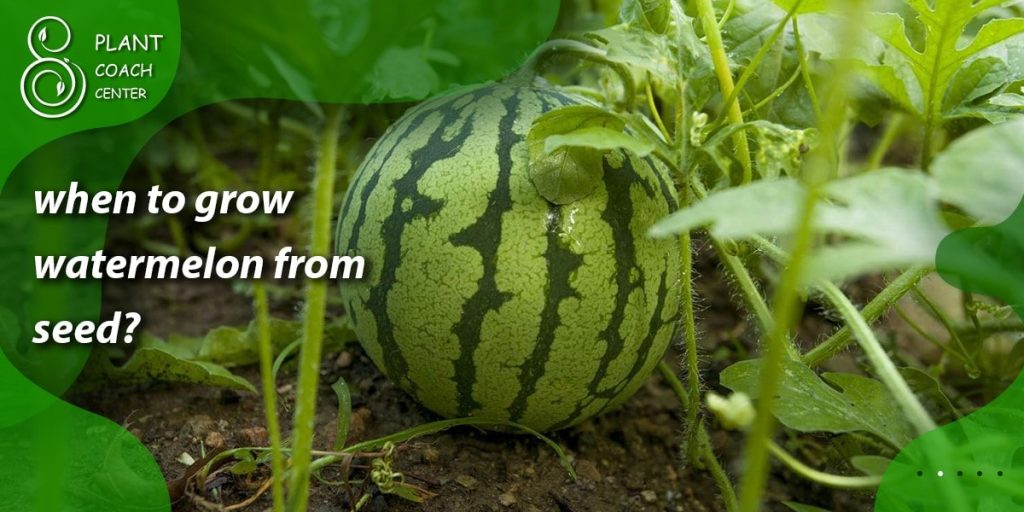
Seed Starting Strategies
The journey to a bountiful watermelon harvest begins with carefully selecting and nurturing seeds. Seed starting is a critical phase in the life of your watermelon plants, and understanding the right strategies can make all the difference. Here are some essential seed-starting tips to set you on the path to watermelon success:
Timing is Crucial
The timing of when you start your watermelon seeds is vital. Begin indoors, typically 2-4 weeks before the last expected frost in your region. Watermelons thrive in warm conditions, so aim for a soil temperature of 70-95°F (21-35°C) for successful germination.
Choose Quality Seeds
Select high-quality watermelon seeds from reputable sources. Check the seed packet for information about the variety, expected days to maturity, and any specific growing requirements.
Seed Germination
To help seeds germinate faster, consider using seed trays or peat pots filled with a well-draining seed-starting mix. Plant each seed about 1 inch deep and water them gently. Maintain consistent moisture and warmth to encourage germination.
Adequate Lighting
Watermelon seedlings require plenty of light to grow strong and healthy. Place them under grow lights or on a sunny windowsill. Provide 14-16 hours of light daily to ensure they receive the necessary energy for growth.
Transplant Carefully
When your watermelon seedlings have two or three true leaves, and the threat of frost has passed, it’s time to transplant them into your garden or larger containers. Handle the delicate seedlings carefully, taking care not to damage the roots.
Harden Off
Before transplanting seedlings outdoors permanently, gradually expose them to outdoor conditions through hardening off. Start with a few hours of outdoor exposure and gradually increase the time over a week or two. This helps seedlings acclimate to outdoor conditions.
Planting depth
When transplanting, ensure the seedlings are planted at the same depth as in their containers. Avoid burying the stems, as this can lead to rot.
Spacing Matters
Space your watermelon seedlings according to the recommendations for the variety you’re growing. Adequate spacing allows for proper air circulation and prevents crowding, which can lead to disease.
Protection
If you live in an area with potential late spring frosts, use row covers or cloths to protect your young watermelon plants from cold temperatures.
Support Vines
As your watermelon vines grow, provide support structures like trellises or cages to keep the fruit off the ground. This prevents rot and enhances air circulation.
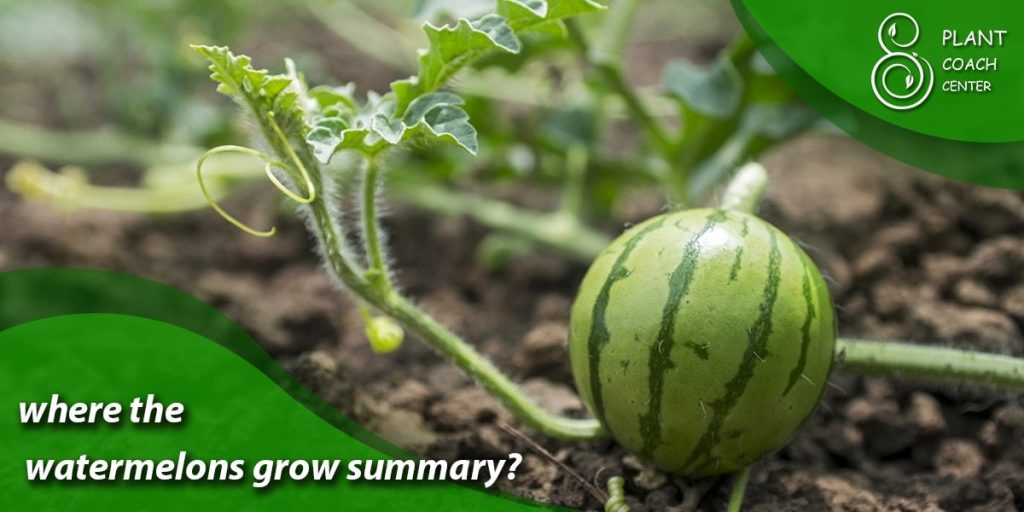
Conclusion
In gardening, the journey of cultivating watermelons transcends mere horticulture; it’s a labor of love, patience, and understanding of the natural world. As we wrap up our exploration of the secrets behind “When to Grow Watermelon,” it becomes abundantly clear that timing is everything. Whether you sow seeds indoors to beat the last frost or extend the growing season with protective coverings, watermelon cultivation involves a delicate dance with the seasons, soil, and climate.
The website PlantCouchCenter.com is your trusted companion on this thrilling journey, offering a wealth of knowledge and resources to help you transform your garden into a watermelon wonderland. As you embark on your watermelon-growing adventure, remember that each seed promises sweet summertime memories, and every juicy bite is a testament to your dedication and nature’s abundant gifts.
So, roll up your sleeves, embrace the secrets shared here, and let PlantCouchCenter.com guide you toward watermelon-growing success. Happy gardening!
When should I start watermelon seeds indoors?
Start watermelon seeds indoors 2-4 weeks before the last expected frost in your region.
What's the ideal soil temperature for watermelon germination?
Watermelon seeds germinate best in soil with a consistent temperature of 70-95°F (21-35°C).
Can I extend the watermelon growing season in cooler climates?
Yes, you can extend the season by using protective coverings, shorter-season varieties, and raised beds.


